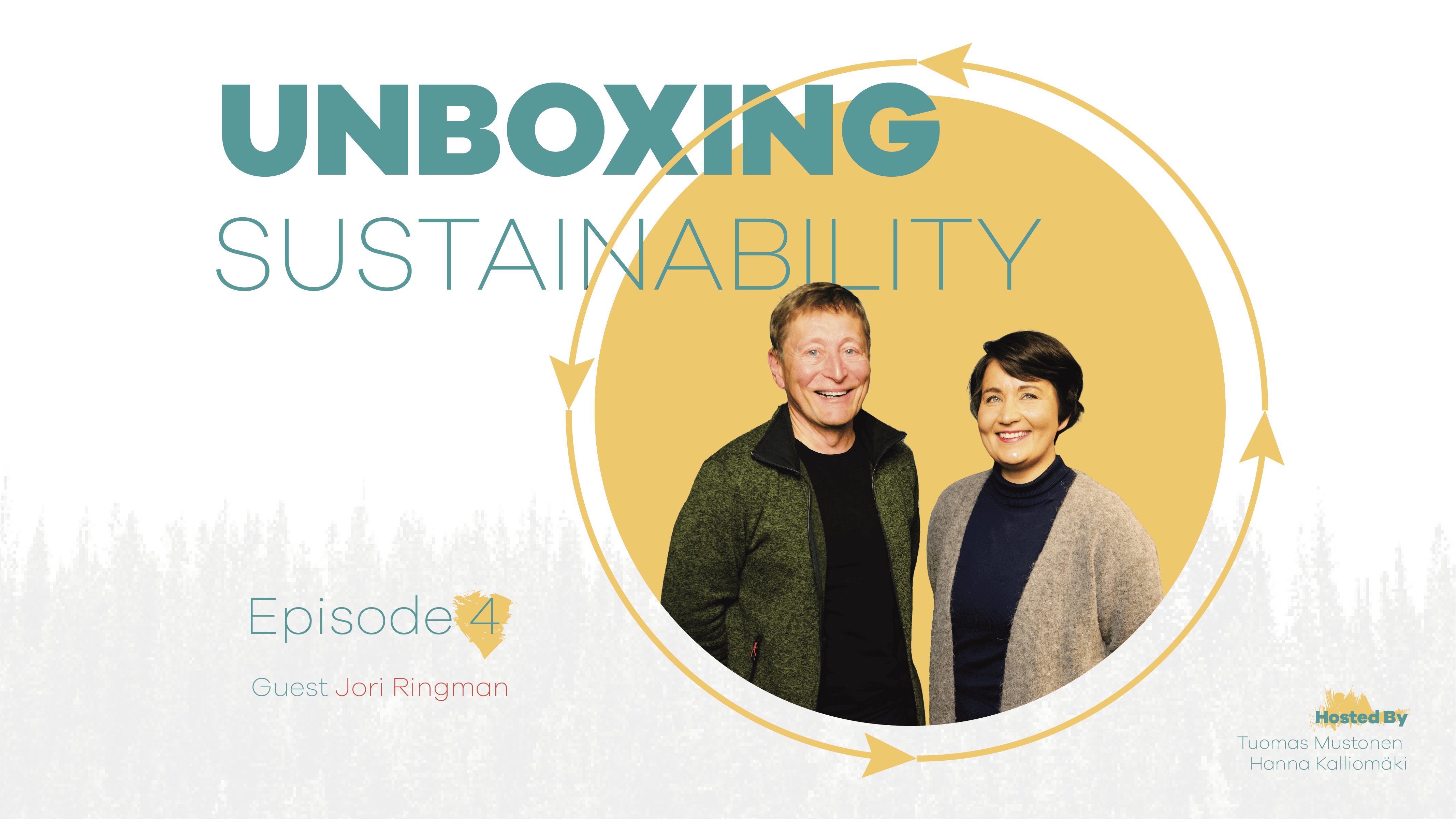Packaging – an enabler of good or rather an avoidable bad – discussing the European packaging regulations with Cepi’s Jori Ringman

If the preview does not load, you can find the episode here!
Every one of us has an opinion about packaging. There’s too much packaging, there’s too complex packaging, packaging causes emissions or packaging is difficult to recycle – or on the contrary, the packaging is fascinating and tempting, it is easy to recycle, and there’s interesting information in the packaging.
But do we acknowledge and still remember, what is the ultimate purpose of the packaging? Well, the packaging is there to protect the goods inside and bring them to us in a good condition. We discussed the topic with Cepi’s Director General Jori Ringman.
Jori Ringman works at Cepi, which is the central organization for the European wood and fibre-based industries. Cepi’s role is to provide reliable information on wood-based materials and their role in the circular economy in the EU as well as to accelerate further development and sustainability measures within the industry and related stakeholders.
Is there a threat that the main purpose of packaging is slightly forgotten, and the continuous pressure for only reducing packaging is increasing?
“There is a serious concern that policymakers see the packaging is something to be primarily avoided and dramatically decreased – and that’s alarming! Instead, packaging needs to be circular, sustainable, and recyclable! When remembering that the main purpose of packaging is to protect the goods inside, packaging needs to be developed in a more circular direction. For example, packaging that is made of renewable raw material from sustainable sources, and that is also very easy and largely recyclable is an excellent option for packaging. Self-evidently fibre-based packaging is such, and it’s also a champion in recycling”, Ringman explains.
In Europe, 82% of fibre-based packaging is being collected and all the recovered fibre has another use, and another, and still another ahead. Fibre-based packaging materials are collected and recycled more than all other packaging materials combined.
Fibre-based materials and the related recycling system are a good benchmark for a viable and circular material management system. That kind of system is needed for all used materials to respond to the challenge of resource scarcity and keep materials in material circulation in closed loops.
As a cherry on top of the cake, in addition to being a forerunner in circularity, the paper industry has committed to improving the system, starting voluntarily further by increasing the share of collection and continuing to better recycling technologies and facilities.
How about the role of packaging in reducing emissions and mitigating climate change?
The fact is that in most cases the environmental impact of packaging is very small, a few percent, of the total environmental impact of the whole product. But there are significant differences between packaging materials, what comes to circularity measures. The packaging and packaging waste directive PPWD has been there now for nearly 30 years in order to steer packaging in a more reasonable and nowadays to more sustainable direction.
”The key question in developing the sustainability of packaging is to choose materials that are from renewable sources and are recyclable. Choosing renewable raw materials from sustainable sources is a concrete action for making the shift from a fossil, linear economy to a sustainable, circular economy.” Jori Ringman explains
But what do we know about the upcoming packaging regulation at the moment, Jori Ringman?
Ringman raises two key points at sight:
“Well, it looks that circularity generally is the direction to which the use of all materials is being steered. What comes to the development of packaging regulation, there are two points that would touch us all as consumers:
- Firstly, it is possible that there will be a mandate to include recycled plastic content in plastic packaging in the future, in order to accelerate the development of plastic recycling which at the moment is in an early stage. There’s still a long way to go to build the collection network and get consumers involved, sorting mixed materials, technologies for mechanical and chemical recycling, building an extensive facility network, etc., but it is good to notice that there’s effort and focus on improving circularity of plastic, too, and support the development of the market.
- Secondly, it looks like there’s now quite a strong emphasis on increasing reusable packaging. This is a big question mark from many angles. The reusable packaging concept would require a great deal of harmonization and systemic development to work efficiently in order to gain the reutilization and the environmental benefits with a structure where the production of material has a fairly high environmental impact, as well as there are additional impact also from the collection, washing, checking, logistics and so on. Another question mark in the reusable packaging concept is how safety and purity of packaging can be ensured.”
Traceability, food contact safety, and other safety issues are key priorities in packaging, and essential parts of sustainability, too, Ringman reminds.
It is clear that all packaging industries need to take development steps. In addition to the Packaging and Packaging Waste Directive, also EPR, Extended Producer Responsibility sets steering to rather use packaging materials that can be recycled easily and efficiently. In practice, this means that using recyclable Paptic® or other fibre-based packaging material causes fewer costs than using plastics. Between plastics, the costs of mono-material plastics are lower than that of multi-layered plastics, for example.
The more circularity and sustainability are emphasized, the more significant the role of renewable and recyclable fibre-based packaging materials – today, and even more importantly tomorrow.
Paptic thanks Jori Ringman for the interesting podcast discussions, and continues the work for replacing the use of fossil plastics in packaging.
Find all our podcast episodes here: Podcast
